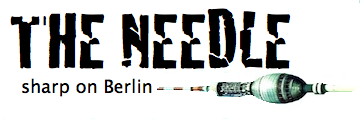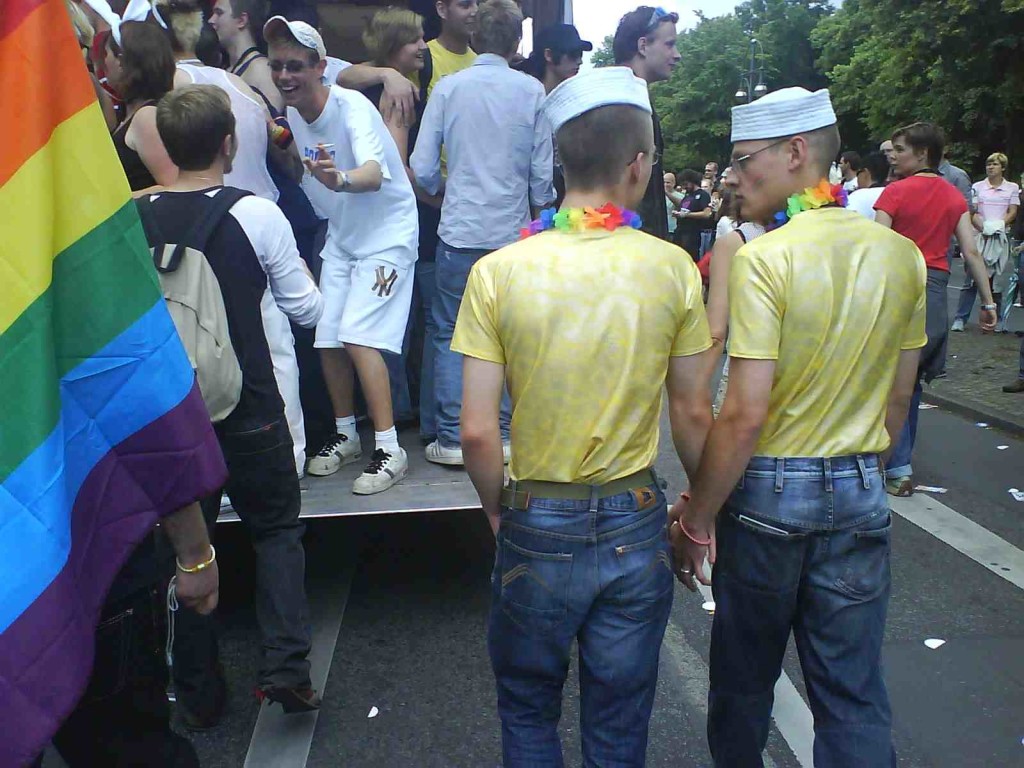Berlin’s New (in Neukölln) Gay Scene
Tonight, one of Berlin’s oldest gay clubs, Schwuz, moves from the long-gentrified Bergmannkiez in West Kreuzberg to the edgy Rollbergkiez in blue-collar Neukölln. Called ‘Gaytrifizierung’ (‘gay-ntrification’) by TIP-Berlin, this move is all the chatter in the queer rags. It certainly does represent a landmark change in the geography of Berlin’s gay scene.
(**FOR OUR UPDATED NEUKÖLLN GUIDE (2018/9) CLICK HERE**)
No one five years ago would ever have thought there would be a gay scene in Neukölln***, which is popularly described by many Berliners as traditional and immigrant-based, or the hood for Hartz-IV social assistance––a problem Bezirk with social tensions a-plenty. A friend who lives near Karl-Marx Straße tells me that going shopping in the local Lidl is depressing: full of either young hipsters, or people who look homeless, and nothing in between. ‘Neukölln is a neighbourhood two gay guys can’t hold hands’, says another. You certainly do feel a little funny walking hand-in-hand down Sonnenallee, before the old men smoking shisha. TIP’s article is dense with discussion about Islamophobia, and statistics (so far reassuring) about the paucity of violence against gay people here. But with plenty more gays showing up, many have fears. As a local resident, I do think this will be a new front of activism for visibility and tolerance in a neighbourhood that needs it.
There’s already change in the air, often articulated as the encroachment of money and the creative class. Gentrification pioneers––like the folks at at Freies Neukölln, who opened one of the first bars to sell good beer and espresso in the neighbourhood five years ago––are shutting their doors to make way for the new wave of even more upscale wine bars and bistros. ‘This isn’t my Berlin anymore’, says the owner (someone should tell him he started it). Rents up near the canal have meanwhile tripled and quadrupled, and the ‘Kreuzkölln’ effect is stretching down Hermannstraße despite the interminable closure on the U8 line.
Get off at Boddinstraße and you’re not such a far walk from the new Schwuz. It’s not the first gay-invader in this neighbourhood of Eckneipe (smoky working man’s corner bars), Turkish football circles, kebab shops and downmarket clothing marts. A number of places with names that suggest minimal spaces––The Zone, the Club––are already here to pick up the crowd that is likely to abandon those West Kreuzberg spaces with campy appellations––Drama, Rauschgold––that coalesce around Schwuz’s former location in the erstwhile house of the Schwules (gay) museum, which itself has moved to Tiergarten. (Mind you, Rauschgold is talking about moving to Neukölln too). Want a transitional space here––that’s silver and not gold––try Silver Future, full of edgy artwork and the buzz of intellectual-(looking) queers. The Club also does art shows and offers zines about theoretical sexualities. Not far is the gay-friendly activist bar Laidak, with its Communist library and meetings of the anti-fascistic hipster brigade. This new generation of hipster gaydome brings with it something––dare I say it––slap me but I might enjoy it––that’s more intellectual and urbane to the Berlin gay scene. Under this performance, of course, are people who still want to get laid. You just might need to talk about Adorno first. A step up from mouthing Madonna lyrics in Schoeneberg.
So, let’s talk about Schoeneberg. Looking for a traditional gay village that brings you back to the days of the Stonewall bar? Go to Nollendorfplatz, and you’ll find plenty of rainbow flags, men in leather, fetish and sex shops, and a rather graying muscled crowd in bars with 90s electronic music and dark corners. This is the ‘gay’ the commercial magazines tell you is ‘gay’, it feels like the polar opposite of what you get in Neukölln. You can even order a tall pink cocktail, sit on a leather-striped sofa and listen to pumping House music under the rotating flecks of a discoball.
Talk to young people from Spain and Italy or Greece (often they are the only ones under 30), with guidebooks in their pockets that have told them to come here, and they understandably might wonder what all the Berlin hype is about. You reply, this neighbourhood is really important: it’s where the gay scene coalesced in West Berlin before the Wall fell, even in the 1920s, when gay people wanted to live in the comfort of each other’s company, where recognition and rights were achieved. It’s the sense of community that’s disappearing into the maw of dreaded integration. But your young man from Verona then blinks, and asks, ‘That sounds like a long time ago. Where do hot guys in their 20s go out?’ and you say ‘Let me see that guidebook’.
But I’m not kidding when I say that Schoeneberg made Neukölln possible: that the city is tolerant and open enough only because of the political successes of the generation that still go out here on Motzstraße. They made it possible for gay people not to be ghettoized and feel free to occupy even the most conservative corners of the capital. So, in a way, what’s happening with Schwuz is part of that longer story––bringing gay people visibly finally into the streets of places they have traditionally felt unwelcome.
Our Italian rolls his eyes, ‘Where do I meet someone who has all his hair?’ and you point him East… to, gasp, Boddinstraße, and Schwuz’s new location, and popular nights like London Calling or Schöner Ficken.
Perhaps there’s not that much to miss about the old Schwuz on Mehringdamm in West Kreuzberg. It was a low-ceilinged claustrophic affair, you needed to pass through the Melitta Sündstrom bar to get downstairs, the restrooms were squeeze-by narrow… in short, a firetrap. But the very discomfort of the space, perhaps, gave it a lack of pretention, like going into someone’s romper room, kicking back in your parents’ basement with a foozball table….
Will the new Schwuz be a painfully self-conscious hipster affair? Will it be friendly? Or will it be––help me––cool? It’s in a massive industrial space, a former Kindl brewery, with state-of-the art sound. What Schwuz’s new identity will look like might reflect on where Berlin is going too. Neukölln is now Berlin’s gentrification laboratory.
Go find out, like we will, when it opens, tonight.
——–
p.s. Or, don’t find out quite yet… because the scary line to get in is (right now: 1am) twice the length of Berghain‘s on a Saturday in midsummer. The party lasts 25 hours, so maybe better luck tomorrow afternoon…
p.p.s. Next day: small fun-loving crowd left the afternoon of the next day. Remarkably huge industrial interior: distressed walls, lofty ceilings, four distinct dance spaces, great sound, unpretentious, beer costs less than 3 EUR. But awfully big. One DJ told me: ‘This is the only weekend it will be full’. Really, how can they fill it on a normal night? Remains to be seen. So check it out next weekend and report!
———
***OK, I lied, it’s not like there were never any gay spaces in and around Neukölln. Around Hermannplatz––located in Kreuzberg officially––there are some sex spaces (some turned funky like Ficken 3000) but with doors that buzz you in. But still, until just a few years ago, you had to go three stations away on the U8 to get to places that actually have windows–– the dark-clad smoky altGay hangouts around Kotti–– like Südblock, Möbel-Olfe and Roses with pink faux-fur walls (like walking into a muppet’s vagina… now, that’s all for this week).

